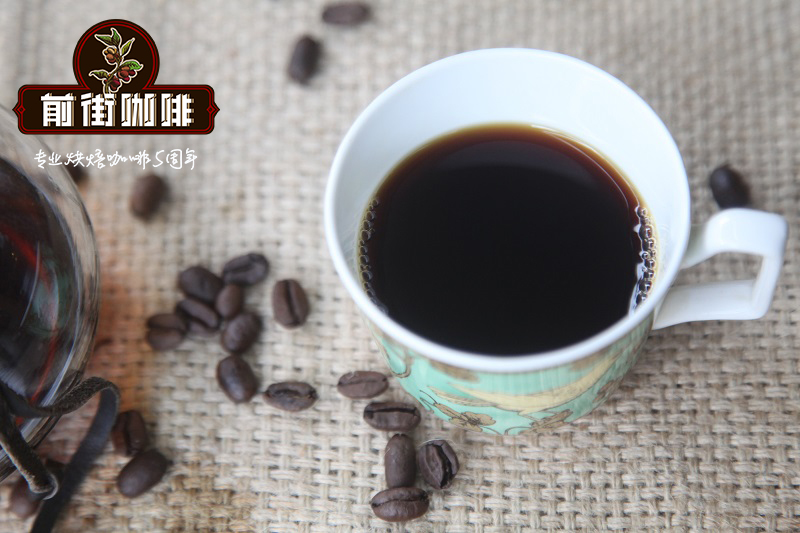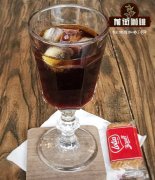Starbucks Colombian Vera Coffee Bean Story _ what is the baking degree of Colombian coffee?

Professional coffee knowledge exchange more coffee bean information please follow the coffee workshop (Wechat official account cafe_style)
Starbucks ®
Single origin series
Colombian Vera coffee beans
COLOMBIA HUILA
Latin America
Cocoa-like flavor with dried fruit-like tail rhyme
Deep baking
Thick and full-bodied
Processing method (washing method)
Acidity: medium
Alcohol: medium
Match with food
Apple, milk chocolate
Coffee variety
100% Arabica coffee beans
The geographical producing area is the embodiment of flavor.
Latin America
Fresh and lively acidity with aromas of nuts, cocoa and soft spices.
Coffee growing areas in Latin America include Mexico and countries in Central and South America. This is an extremely important area for Starbucks. In 2009, Latin America accounted for more than half of our total coffee purchases. Coffee from this area is often referred to as "washed" coffee and is generally processed by fermentation to form a flavor. We purchase washed coffee mainly because of their consistent taste and quality, and use them as the basis of our favorite comprehensive coffee. Latin American coffee tends to have a balanced flavor of cocoa and nuts as well as fresh and comfortable acidity.
The processing method will affect the overall flavor of coffee.
Washing method
Water washing helps to improve the acidity or aroma of coffee and gives it a soft and refreshing aftertaste.
As the name implies, this method mainly depends on the use of water. This is especially true when the mucus layer is dissolved in a large water tank during fermentation. As a result, cleaner coffee beans and cup flavors with higher acidity can be obtained. In fact, fermentation strengthens the acidity of coffee, which is why Latin American coffee (mostly washed) is often famous for its remarkable acidity.
① collection: coffee berries will be transferred to a wet workshop where they are measured and placed in the collection tank.
② beating (de-fleshed): after the berries have been washed, they are fed into a pulp-removing machine. By rubbing, the pulp on the coffee beans can be fundamentally removed, which is waiting to be fermented, and the pulp will be collected for composting.
③ fermentation: after the pulp is removed, the coffee beans will be sent to the fermentor and fermented for 18-36 hours. In the early stages of fermentation, the enzyme breaks down the mucus so that the pulp can be removed. After fermentation, the coffee beans remove all residual mucus through the cleaning channel.
④ drying: coffee beans are dried on a drying table in a large outdoor yard, or by using a mechanical drum dryer. When drying outdoors, coffee beans need to be raked and turned constantly to ensure that they are evenly dried in the sun, a process that takes 5-7 days.
⑤ shelving: dry coffee beans are bagged and transferred to the warehouse for two months, while coffee beans continue to form flavor.
⑥ peeling: peel the coffee after shelving, the last step is to remove the peel around the outside of the coffee bean.
Fairness norms for coffee and growers
C.A.F.E. Practices
In 1988, we began to work with the world-renowned non-profit organization Conservation International (CI) to create a code of ethical procurement, namely C.A.F.E. (coffee and grower's Fair approach) Practices. C.A.F.E. Practices is a coffee procurement guideline to ensure that we purchase high-quality coffee grown in a socially and environmentally responsible manner.
Four elements of C.A.F.E. Practices:
Starbucks gives priority to buying coffee from growers and farmers who implement C.A.F.E. Practices and meet established standards in four directions of the program:
Product quality-all coffee beans must meet Starbucks quality Arabica coffee standards.
Economic responsibility-transparency is very important. Our suppliers are required to submit payment vouchers for raw (unroasted) coffee beans throughout the coffee supply chain, including receipts indicating the amount of coffee paid directly to the grower.
Social responsibility (assessed by third parties)-growers and farmers must have measures that can improve safe, fair and humane working conditions for reference. These include the protection of the rights of workers and the provision of adequate living conditions. Minimum wage requirements must be met and child labour / forced labour and discrimination must be addressed.
Environmental leadership (assessed by third parties)-in the process of growing and processing coffee, good environmental measures must be put in place to manage waste, protect water quality, save water and energy, protect biodiversity and reduce the use of agricultural fertilizers.
Third-party inspection agencies inspect farms and mills in accordance with C.A.F.E. Practicess. We work with the Scientific Certification system (SCS) to maintain an efficient and reliable inspection process.
Starbucks ®Coffee Stamps
The story of Colombian coffee beans
In the Vera region of Columbia, the two Andean Cordillera Mountains, which begin with the Magdalena River in Rio de Janeiro, have warm air masses blowing from the upper reaches of the Caribbean, creating a special climate conducive to the growth of coffee. The growers worked hard and bravely to cultivate a small steep hillside in this remote and rugged area. We salute their dedication and thank them for bringing us this elegant coffee characterized by apple acidity and milk chocolate tail.
Geography is the perfect embodiment of flavor.
Coffee beans from the Vera region are known for their juicy acidity, mild citrus and herbaceous flavors, which participate in the blending of many of our core coffee beans.
Vera is located in southwestern Colombia between the eastern and western peaks of the Andes. The flavor of coffee beans is mainly influenced by Colombia's main rivers, the Magdalena River in Rio de Janeiro and the two Andes, which are dotted with volcanoes and provide fertile volcanic soil. the formation of a warm tropical air mass blowing from the upper reaches of the Caribbean provides favorable conditions for coffee cultivation and a unique microclimate. With the change of altitude and geographical location, the climate of the whole mountain becomes very diverse, warm and humid in the valley, while the top of the volcano is cold and snowy.
The large span of the Colombian region allows a large number of microclimates suitable for coffee cultivation throughout several growing areas and helps shape the unique flavor of Colombian coffee.
Of all the countries where Starbucks buys coffee, Colombia offers the most diverse variety of coffee. Such diversity and consistent quality make Colombian coffee a key component of many Starbucks mixed and selected coffees.
The art of packaging is inspired by the Magdalena River and the Andes in Rio de Janeiro, reflecting the importance of these natural factors to the formation of coffee and the customs and customs of the region.
The enthusiasm and commitment of local growers to cultivate this excellent Colombian coffee is just as much as they inherit traditional dances and customs.
END
Important Notice :
前街咖啡 FrontStreet Coffee has moved to new addredd:
FrontStreet Coffee Address: 315,Donghua East Road,GuangZhou
Tel:020 38364473
- Prev

Recommendation of organic hand-brewed coffee beans in Colombia. Introduction to Buenavista Manor, an Armenian coffee producing region.
The history of coffee in Colombia dates back to 1808, when a priest brought coffee into the country for the first time from French Antilles via Venezuela. The suitable climate in Colombia provides a natural pastor for coffee in a real sense. Since then, coffee has taken root in this country.
- Next

Introduction of Popayan boutique coffee beans in Cauca, Colombia. Recommendation of high quality Arabica washed beans
Professional coffee knowledge exchange more coffee bean information Please pay attention to the coffee workshop (Wechat official account cafe_style) many people like to drink Colombian coffee, she has a silky smooth taste, of all the coffee, it is the best balanced, soft, smooth and ready to drink. In terms of appearance and quality, the Columbia Super Class is quite excellent.
Related
- Detailed explanation of Jadeite planting Land in Panamanian Jadeite Manor introduction to the grading system of Jadeite competitive bidding, Red bid, Green bid and Rose Summer
- Story of Coffee planting in Brenka region of Costa Rica Stonehenge Manor anaerobic heavy honey treatment of flavor mouth
- What's on the barrel of Blue Mountain Coffee beans?
- Can American coffee also pull flowers? How to use hot American style to pull out a good-looking pattern?
- Can you make a cold extract with coffee beans? What is the right proportion for cold-extracted coffee formula?
- Indonesian PWN Gold Mandrine Coffee Origin Features Flavor How to Chong? Mandolin coffee is American.
- A brief introduction to the flavor characteristics of Brazilian yellow bourbon coffee beans
- What is the effect of different water quality on the flavor of cold-extracted coffee? What kind of water is best for brewing coffee?
- Why do you think of Rose Summer whenever you mention Panamanian coffee?
- Introduction to the characteristics of authentic blue mountain coffee bean producing areas? What is the CIB Coffee Authority in Jamaica?

